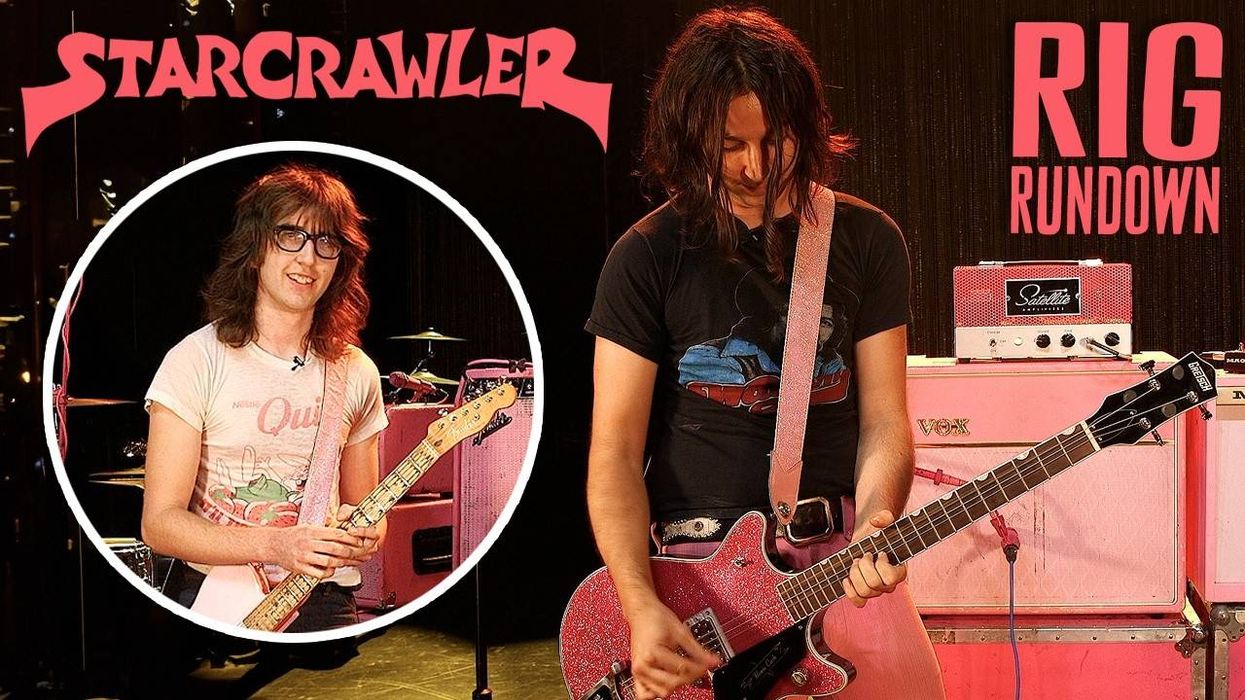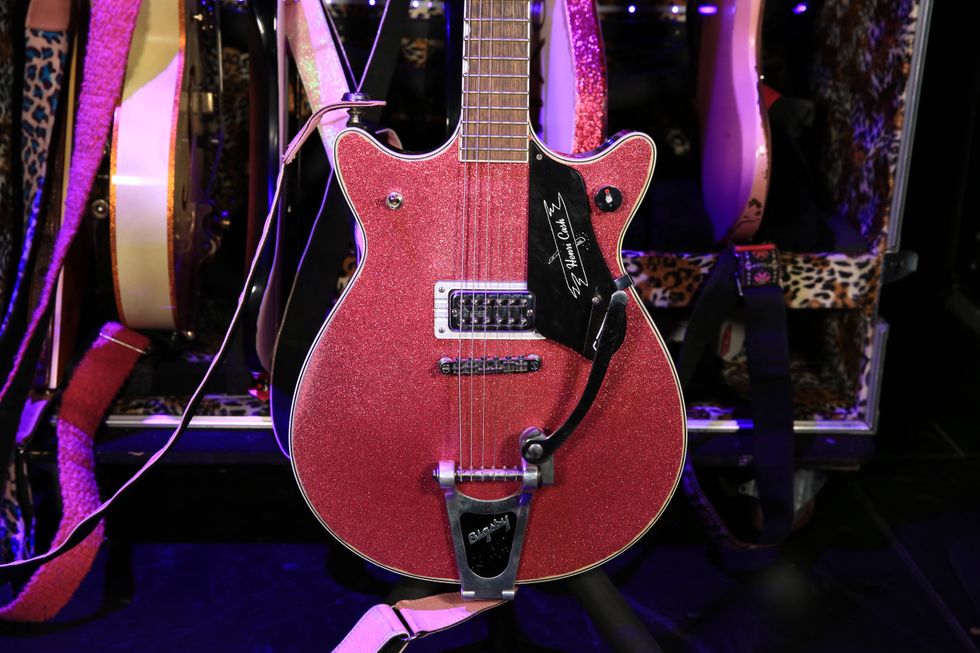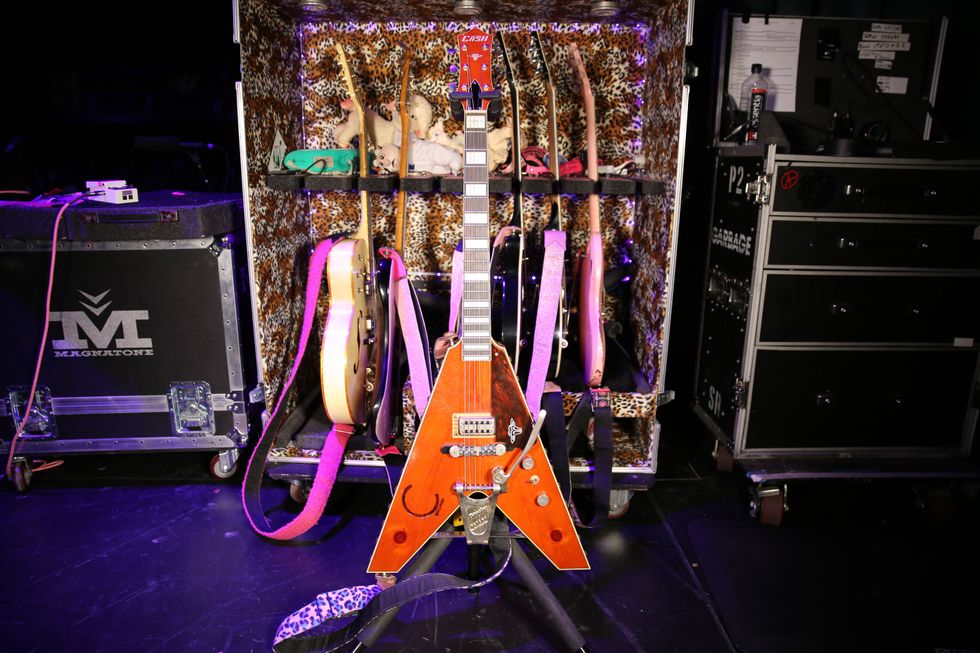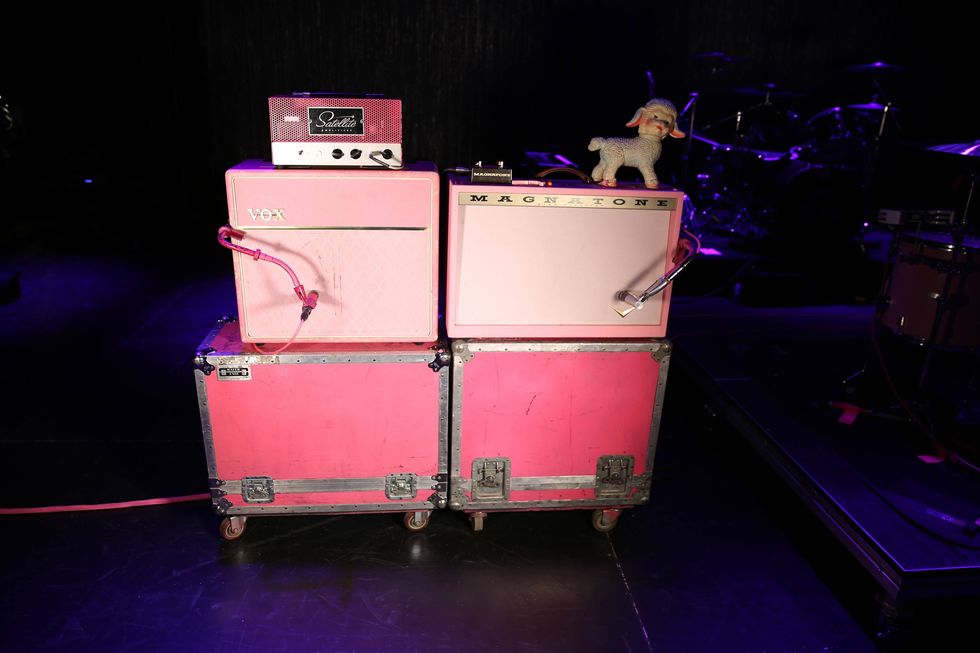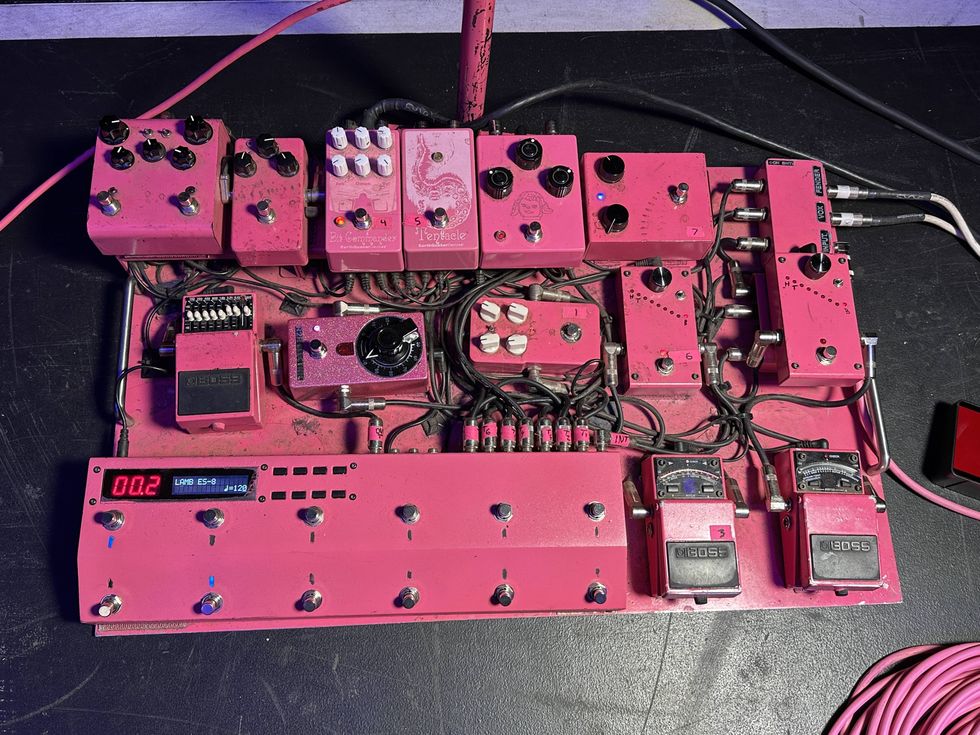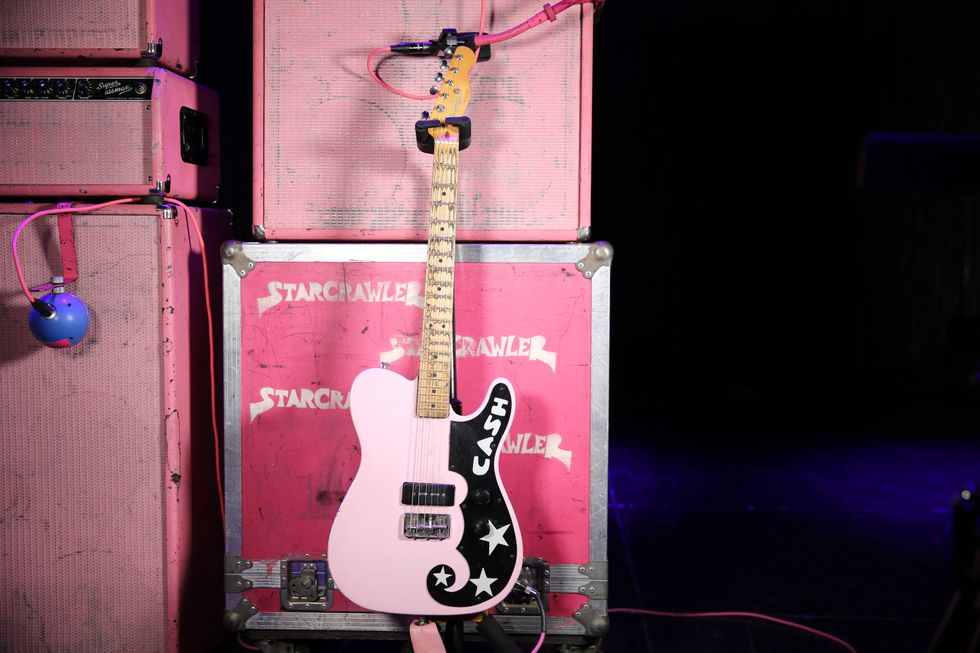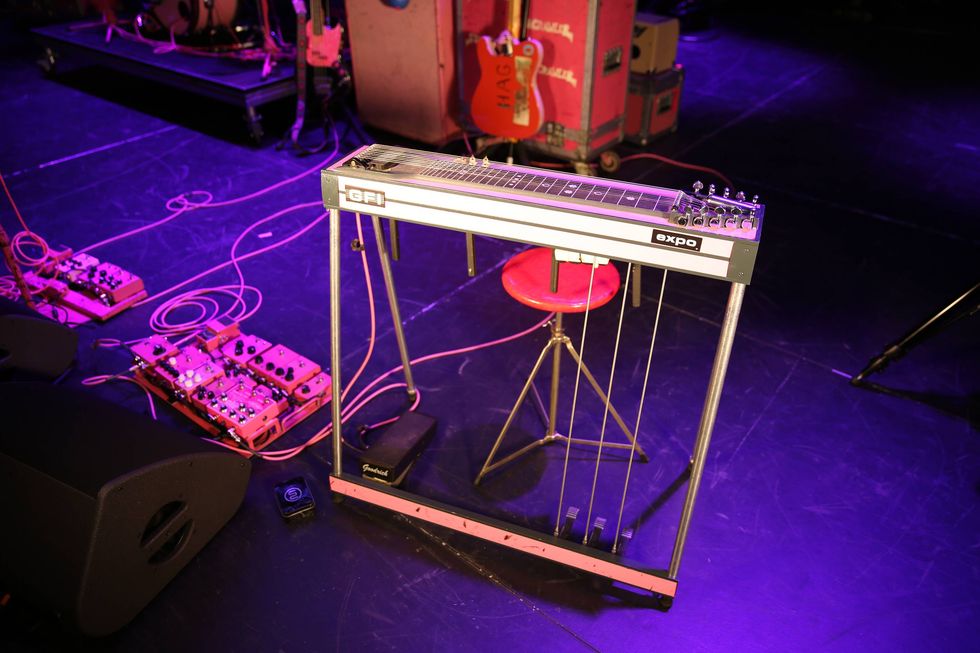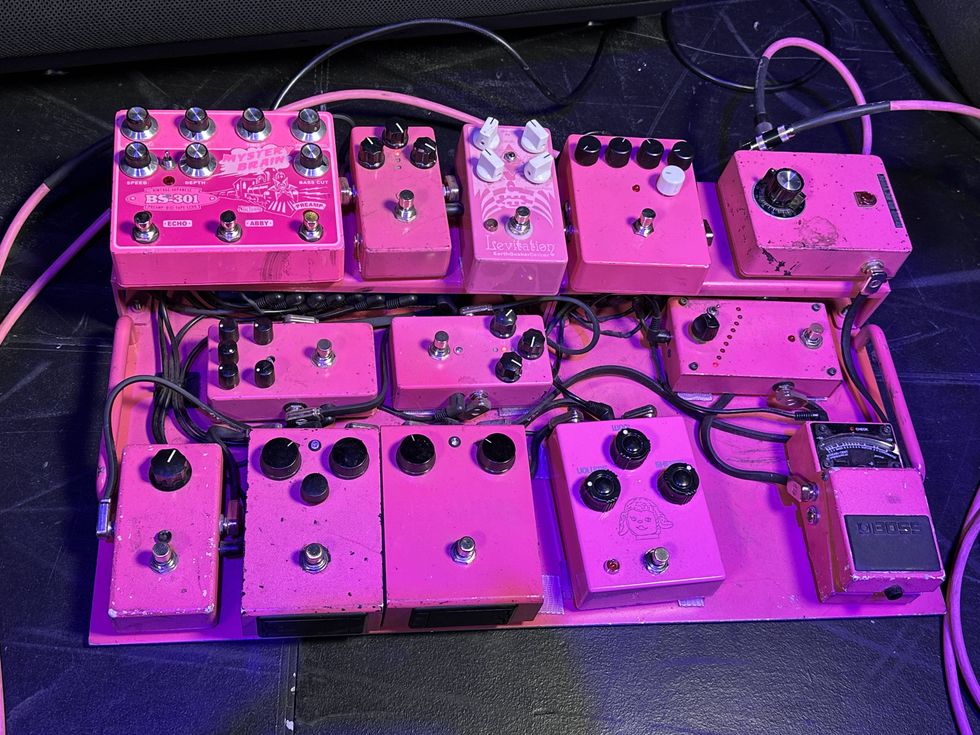Three abnormal basses, two loopers, and a few warping stomps help Kristian Dunn morph and multiply his buoyant post-rock tones.
Pedals can be a source of inspiration. But can they be the catalyst to start a band? The argument could be made that without a looper bassist Kristian Dunn and drummer Tim Fogarty would’ve never taken flight as El Ten Eleven. (The band is named after the Lockheed L-1011 TriStar airplane.)
“I knew I wanted to start a band—in my mind it was probably going to sound like El Ten Eleven—but I didn’t know exactly how I’d do it. I got Tim [Fogarty] to play drums and I thought I’d get a third person for keyboards,” recalls Dunn.
Fogarty wondered if Dunn had ever heard of a looper pedal. He hadn’t, so Dunn borrowed one from a friend and brought it to band practice. “We tried it, and right out of the gate our eyes lit up and we thought out loud, ‘Oh my god! Could we just do this with the two of us?!’”
Since 2002, the live-looping masterminds have taking to the skies performing their organic, net-free, high-wire act. (Even Fogarty loops electronic drum parts through Dunn’s Boomerang that runs into a Gallien-Krueger MB Fusion 800 and a GK 115 RBH cabinet that sits near Fogarty.) And to celebrate two decades of their clever, playfully poetic, post-rock instrumentals, they’ll release their ninth album, New Year’s Eve, on March 4, 2022 via Joyful Noise.
Before El Ten Eleven’s headlining show at Nashville’s Exit/In on January 26, juggling, tap-dancing, bass-playing Dunn gave PG’s Chris Kies 30-plus minutes to detail his cockpit. He explains how a late-night Genesis video influenced his doubleneck duality, illuminates why he always carries a marker, and then unlocks some expressive cheat codes with his pedalboard and signal chain.
Brought to you by D’Addario XPND Pedalboard.
Two Instruments, One Musician
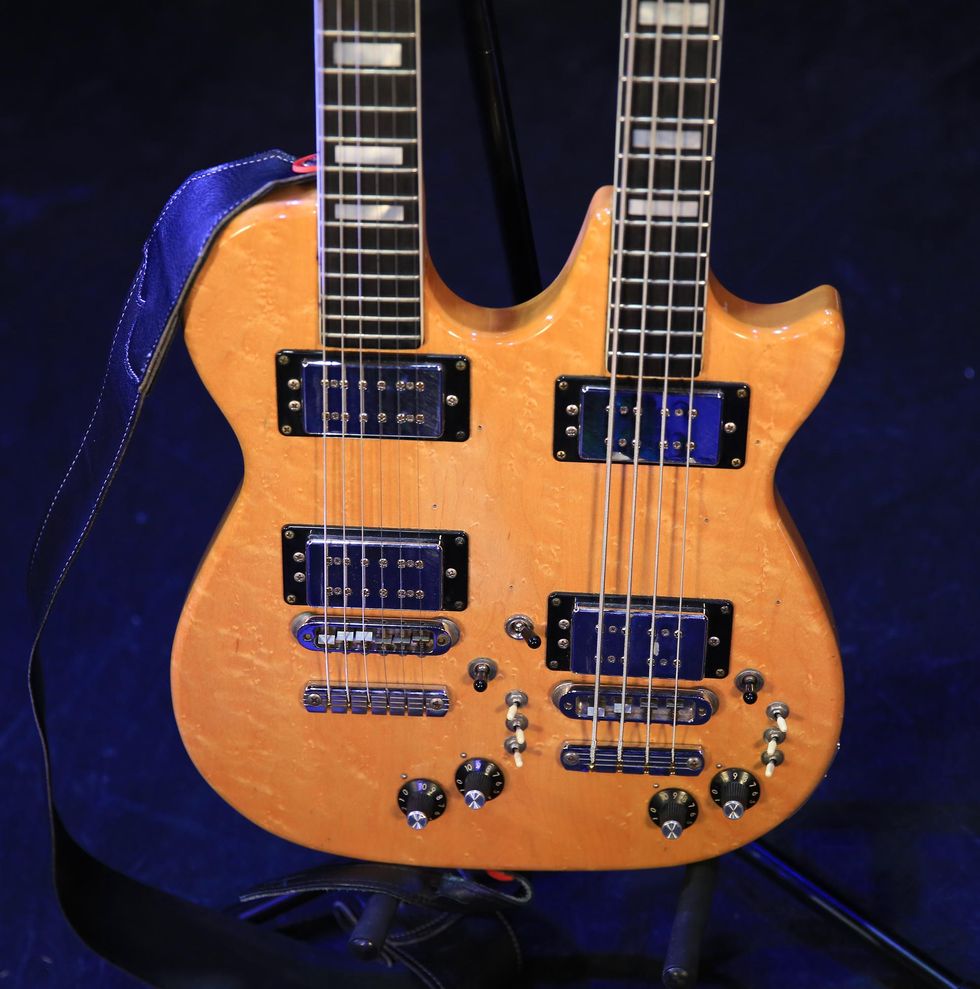
“I’m a bass player,” declares Dunn. “I’m a terrible guitarist [laughs].” Late one night while watching VH1 Classic, Dunn saw a Genesis video where Mike Rutherford used a guitar/bass doubleneck. Up to that point, he was crudely looping by putting on and taking off various instruments. (He still uses several instruments during one song.) This doubleneck would alleviate all that rigmarole. So Dunn pivoted to eBay and immediately found this 1977 Carvin DB630 Doubleneck that has a 6-string top and 4-string bottom (30" scale length). It features a bird’s-eye maple
body, a bolt-on, hard-rock maple neck, APH-6S pickups (guitar), and APH-8 pickups (bass). Each set has master volume and tone controls, plus phase switches and coil splitters. Dunn uses Ernie Ball 2221 Slinkys (.010–.046) for the guitar and Ernie Ball 2852 Short Scale Regular Slinkys (.045–.105) for the bass. The guitar neck is tuned to E-A-D-G#-B-E, while the bass neck is tuned to D-A-D-A.
A Head Above the Rest
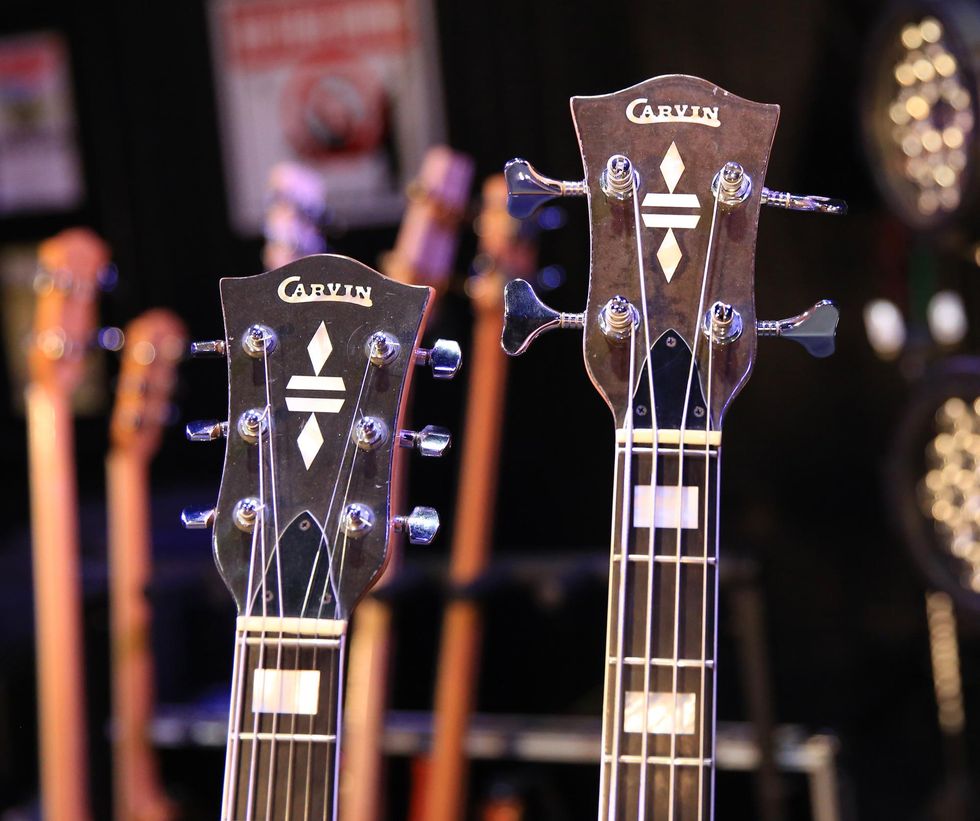
Here are the matching headstocks for the doubleneck, revealing both have a zero fret.
A Wal of a Good Time
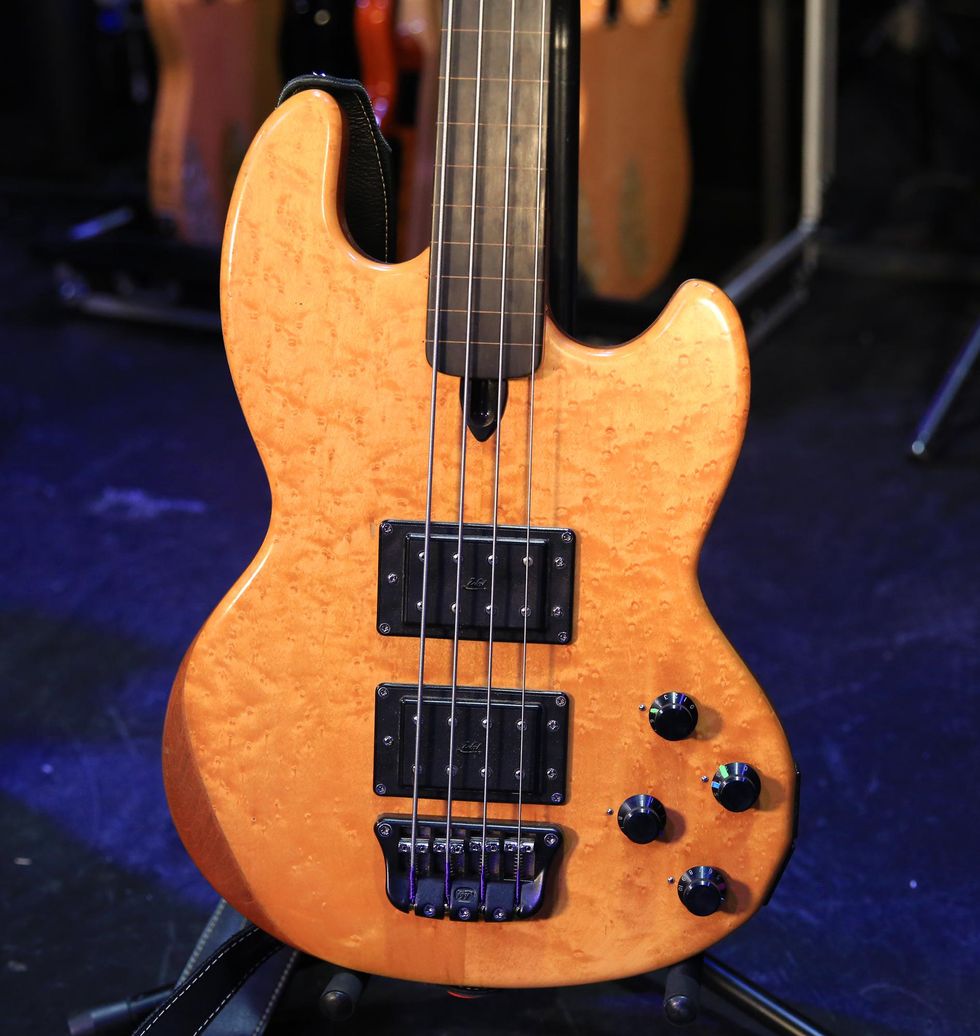
“For me, Wals are the best basses in the world,” contends Dunn. “I’ve never heard a better-sounding bass.” This 1988 Wal Mk1 was bought from Rig Rundown alumnus Tim Lefebvre. It has a Brazilian mahogany core that’s masked by a bird’s-eye maple cover. The fretboard is made from Indian rosewood. The humbuckers are controlled by a master volume that can pulled out to engage “pick attack” circuity that Dunn describes as having “a brighter sound.” The pickup selector is actual a knob that dials in each pickup for maximum blending control. And each pickup has a low-pass-filter knob.
On their upcoming album, New Year’s Eve, Dunn rides the bridge pickup’s low-pass filter at about 4 and kicks on his Marshall Guv’nor for the nasty groove in “Meta Metta.” He did use roundwound strings on this instrument for years, but after having the fretboard sanded down from the wear they caused, he’s since opted for Ernie Ball 2813 Hybrid Slinky Flatwounds (.045–.105) that are kinder to the wood and still give a brighter tonal sheen.
Hungry Like the Wolf
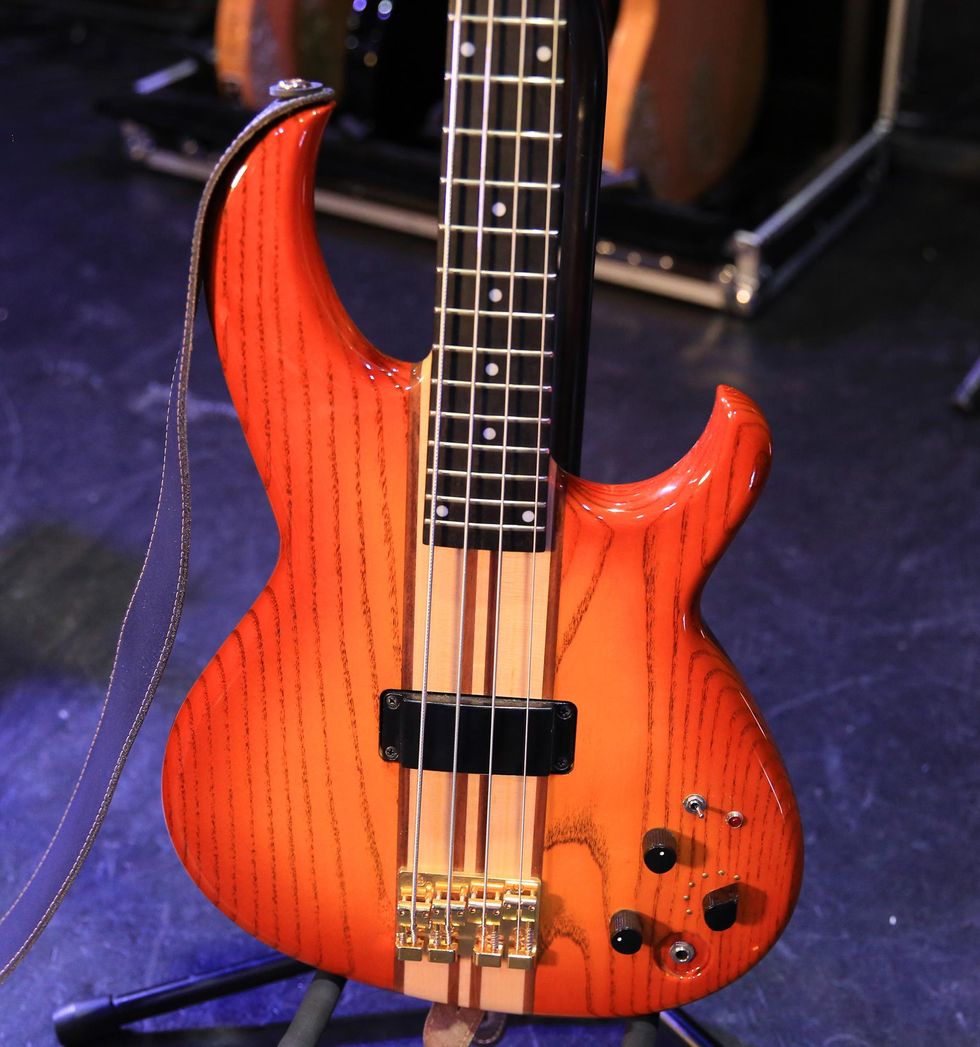
“When I was a teenager, one of my bass heroes was John Taylor of Duran Duran, so I’ve always wanted an Aria like his,” states Dunn. This is an Aria Pro II SB-1000 with an ash body, a 7-ply maple/walnut neck (with thru construction), an ebony fretboard, a 34" scale length, a MB-1E Double Coil pickup, a 6-way low-pass filter preset, and Gotoh hardware. Varying the low-pass filter allows Dunn to loop several parts atop each other, providing tones to handle bass, guitar, and keyboards. This one takes Ernie Ball Hybrid Bass Slinkys (.045–.105).
Captain Hook
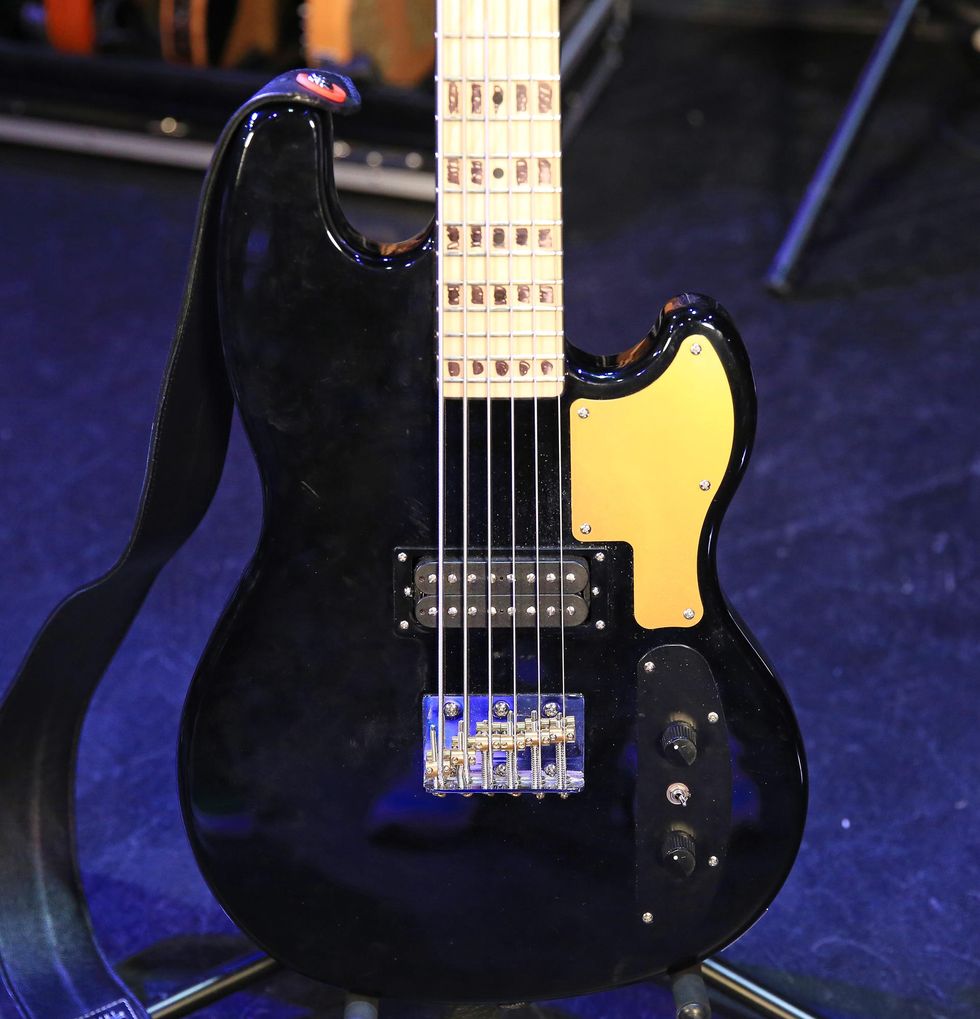
El Ten Eleven has had the pleasure of opening for Peter Hook and his various outfits several times. Hook is known to perform with custom Shergold Marathon 6 basses. (The difference with this instrument are the extra two strings are higher-tuned, allowing it to creep into a guitar’s range. Most standard models have the standard four bass strings plus one higher and one lower.)
With the help of Hook’s son, Dunn was able to secure one of the beasts. He did several tours with it, but has since retired the unique instrument because supposedly only about 100 of the 6-string models were made. Luckily, in 2019 Eastwood struck a partnership with the famed New Order and Joy Division bassist and released the Hooky Bass 6 Pro. Dunn admits to trying several other 6-string models from Fender and Schecter, but says those are designed more for guitarists, whereas the Shergold and the Hooky have bassists in mind—with wider string spacing that allows Dunn to play fingerstyle as he would on a normal 4-string.
Its ingredients are a solid alder body, bolt-on maple neck, maple fretboard, an Eastwood custom humbucker, and a 30" scale length. Dunn tunes his D-A-D-A-B-E and uses a custom range of Ernie Balls that starts with Hybrid Bass Slinkys (.045–.105), and the 5th-string is a .042 and the 6th-string is a .030.
With a Little Help from My Marker
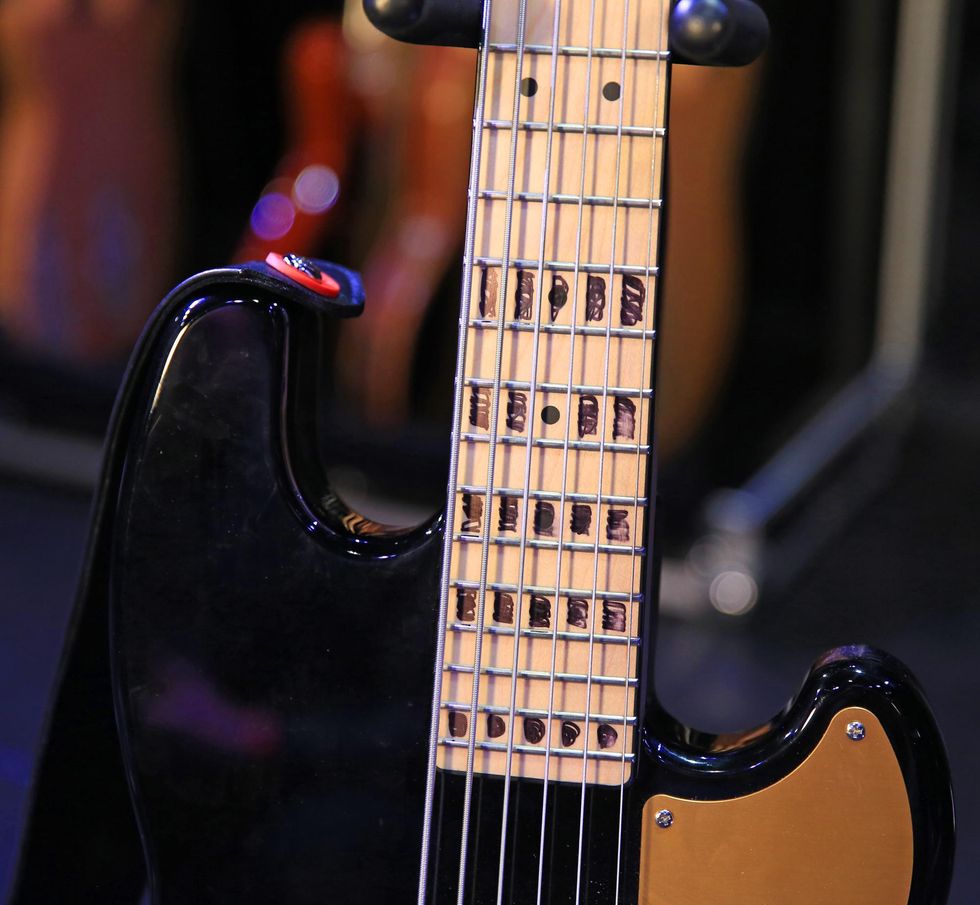
To help him see the upper register for more precise picking, he added in some Sharpie inlays to give guidance when the lights go low during the show.
Growling With the Gallien
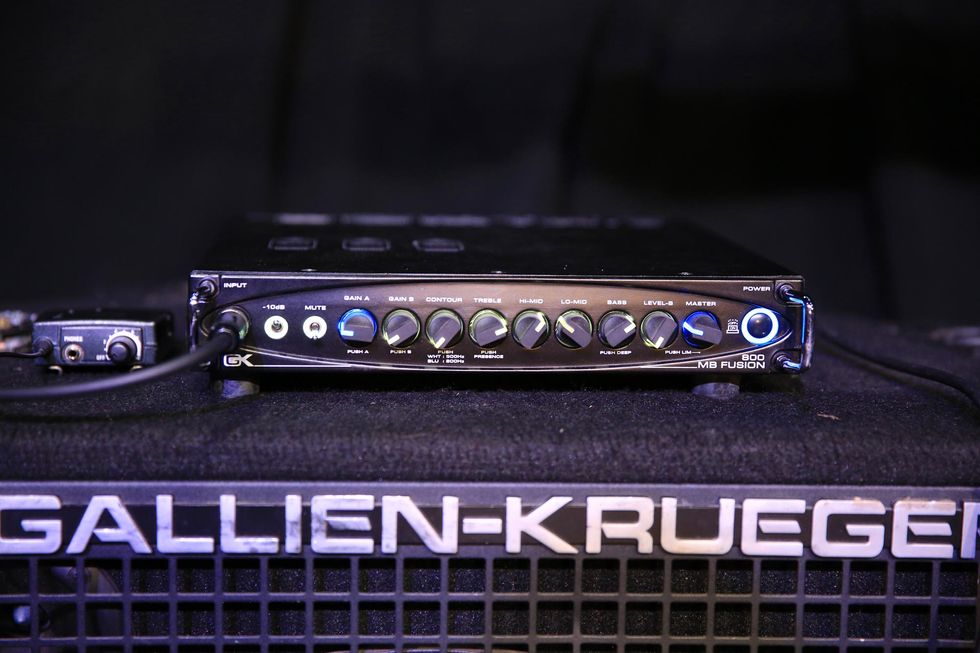
Dunn only plugs into this Gallien-Krueger MB Fusion 800. He gooses the treble control to help the guitar and keyboard sounds push through the other layers. He swore by GK’s 4x10 extension cab for years, but after doing a shootout with different configuration and speakers, he surprisingly favored the ported GK 115 RBH cabinet that has a ceramic driver and tweeter. He loves this setup’s hi-fi sound.
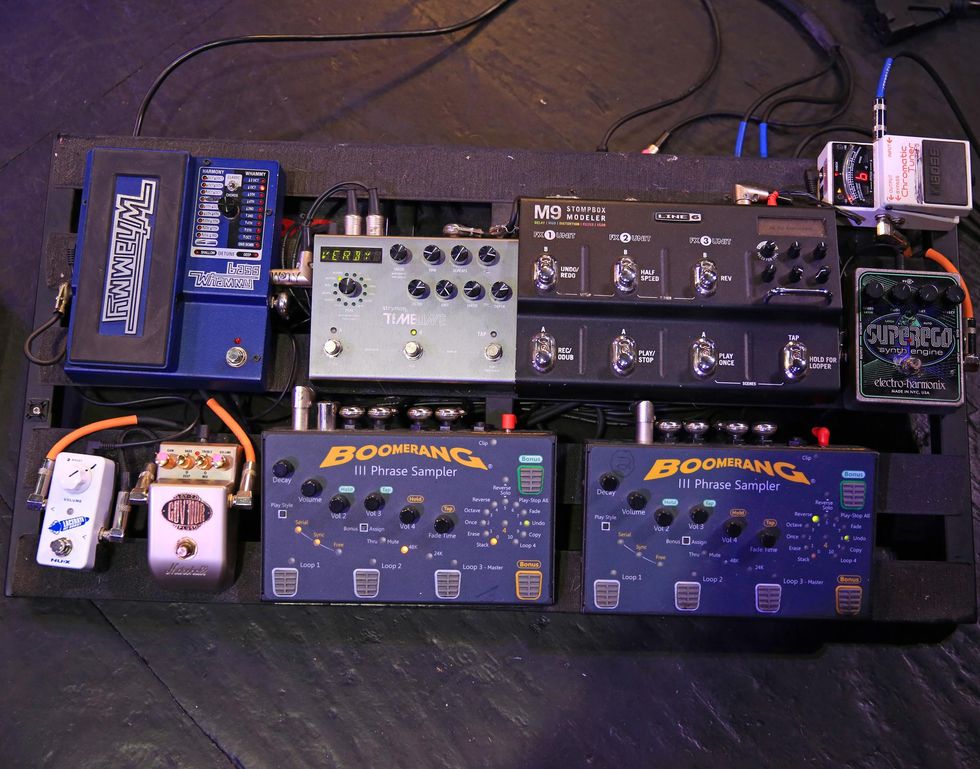
At one point, Dunn had three pedalboards and would have to crouch down and manipulate settings all night. Most of the swatches coloring his sound come from the Line 6 M9 Stompbox Modeler. The two Boomerang III Phrase Samplers are what make an El Ten Eleven show (or record) happen. In line, they’re separated by the DigiTech Bass Whammy. Dunn routes his signal this way so he can use the Whammy to shift octaves or keys on entire loops in Phrase Sampler one. The second Phrase Sampler, after the Whammy, allows him to pitch-shift specific loops without impacting the whole song or other loops (which can be done by the first Boomerang). The Strymon TimeLine sees the spotlight for precise repeats and specific delay settings not in the M9. The Electro-Harmonix Superego is a secret weapon harnessed by Dunn for sleek, reverse-sound bends. When he holds down the freeze function, it holds the original note. Then he continues holding down and plays the next note (which is not audible), but once he releases the switch, the ongoing audible note bends into the second note. The remaining two pedals are more standard fare: a Nu-X NFB-2 Lacerate FET Boost and a Marshall GV-2 Guv’nor Plus. A Boss TU-3 Chromatic Tuner keeps his instruments in check.
Bradshaw Breakthrough
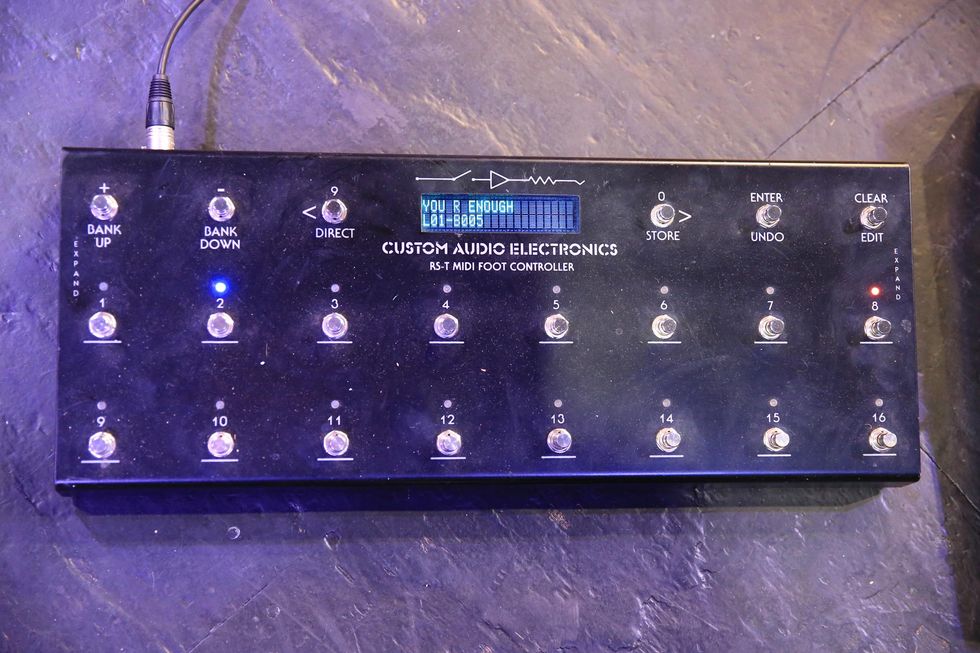
Simplifying scene changes and making life a little easier for Dunn is this Custom Audio Electronics RS-T MIDI Foot Controller. The unit talks with the M9 and Strymon, alleviating some tap dancing for Dunn to pull off an El Ten Eleven performance.





![Rig Rundown: Russian Circles’ Mike Sullivan [2025]](https://www.premierguitar.com/media-library/youtube.jpg?id=62303631&width=1245&height=700&quality=70&coordinates=0%2C0%2C0%2C0)



















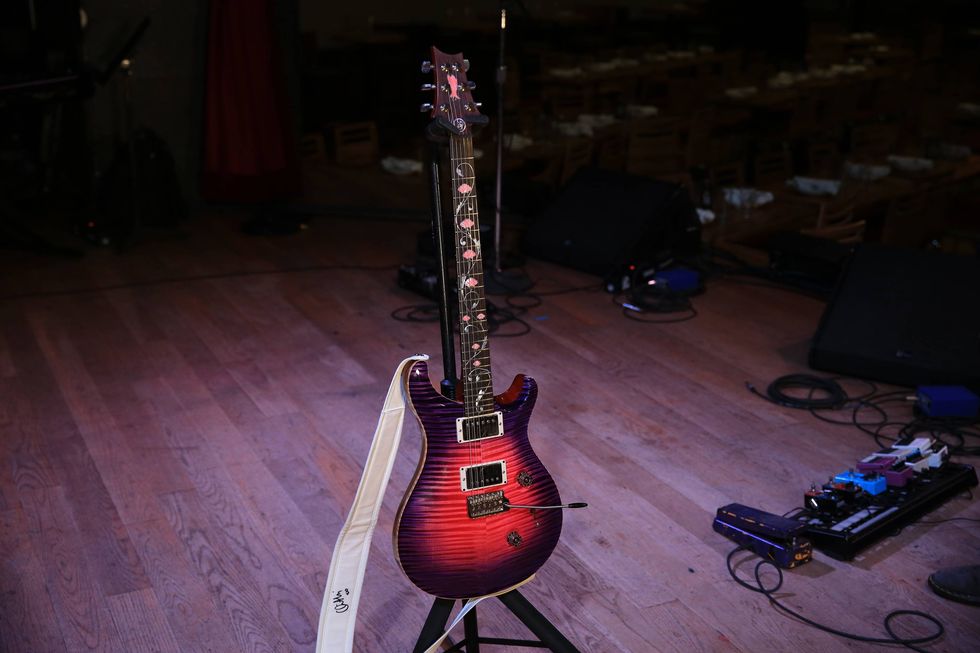
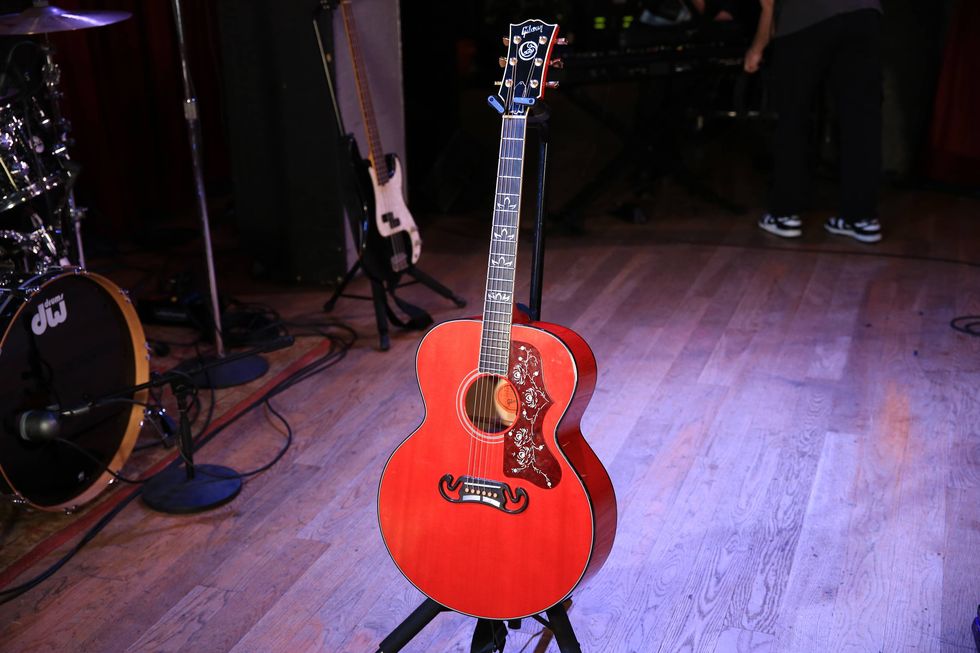
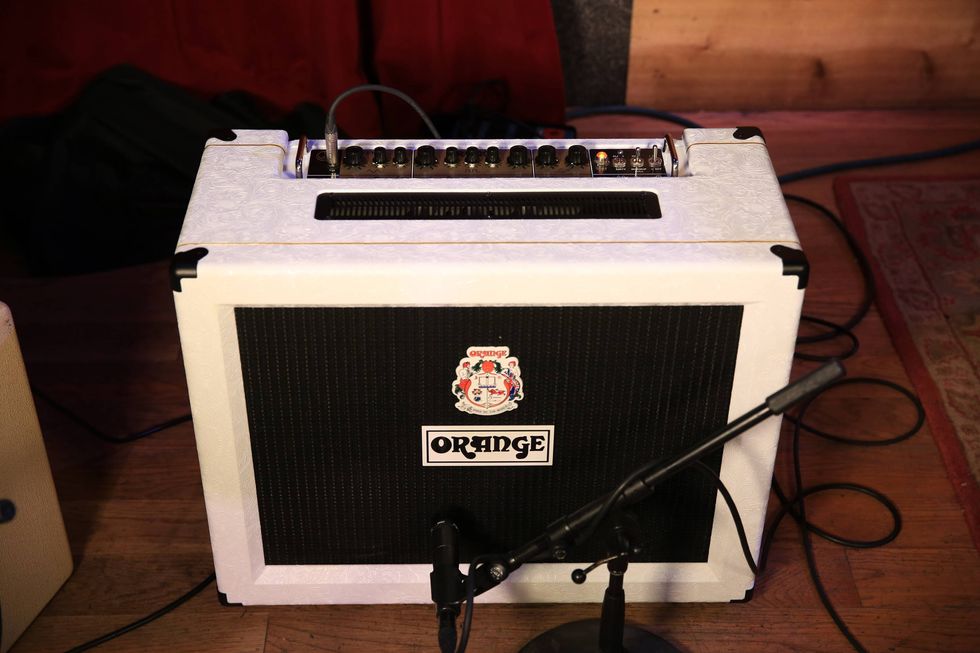
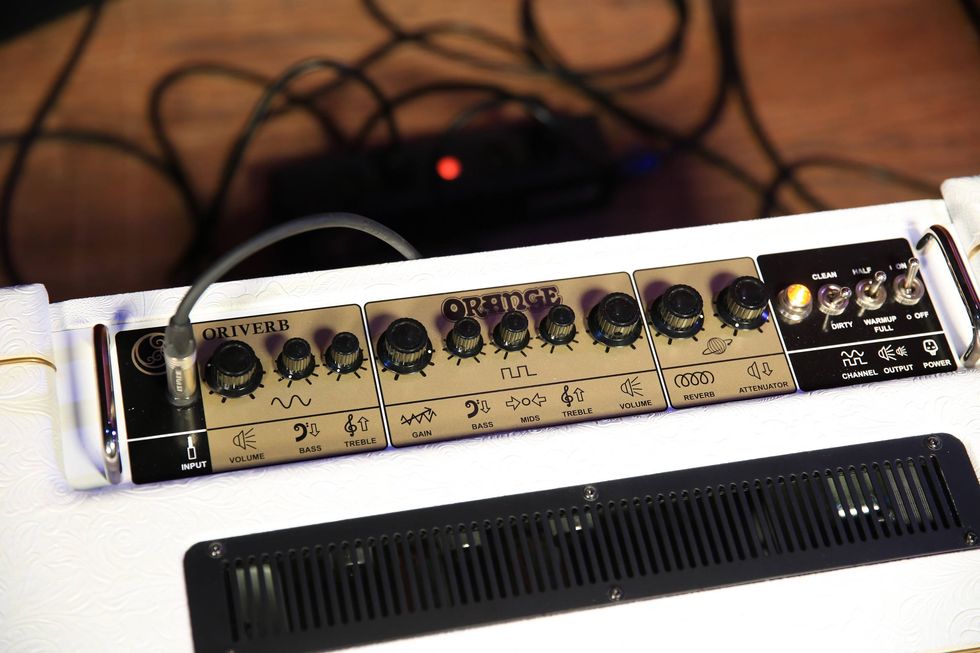
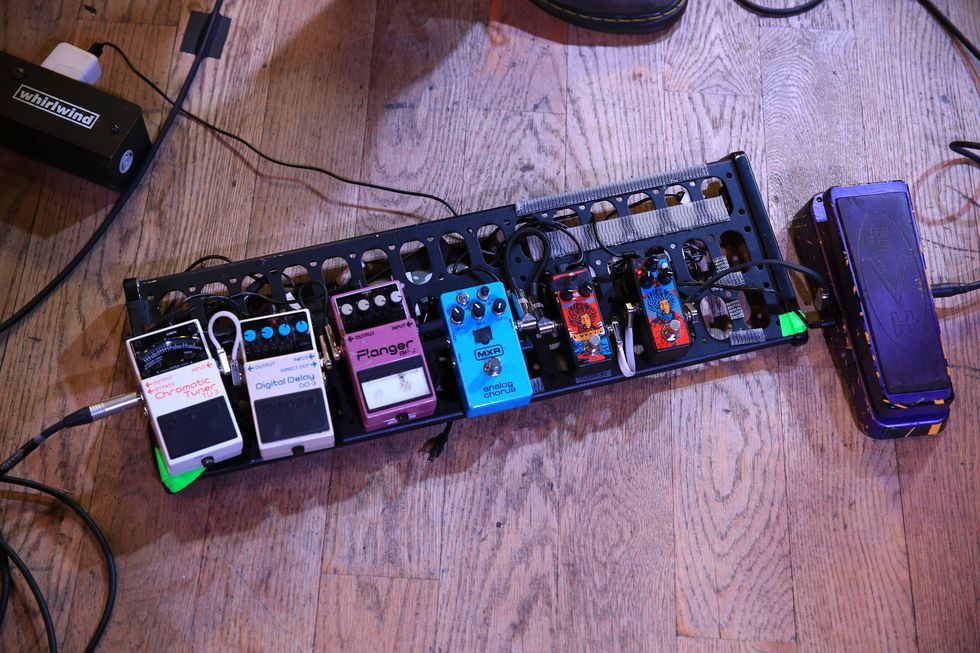

![Rig Rundown: AFI [2025]](https://www.premierguitar.com/media-library/youtube.jpg?id=62064741&width=1245&height=700&quality=70&coordinates=0%2C0%2C0%2C0)




















 Zach loves his Sovtek Mig 60 head, which he plays through a cab he built himself at a pipe-organ shop in Denver. Every glue joint is lined with thin leather for maximum air tightness, and it’s stocked with Celestion G12M Greenback speakers.
Zach loves his Sovtek Mig 60 head, which he plays through a cab he built himself at a pipe-organ shop in Denver. Every glue joint is lined with thin leather for maximum air tightness, and it’s stocked with Celestion G12M Greenback speakers.







